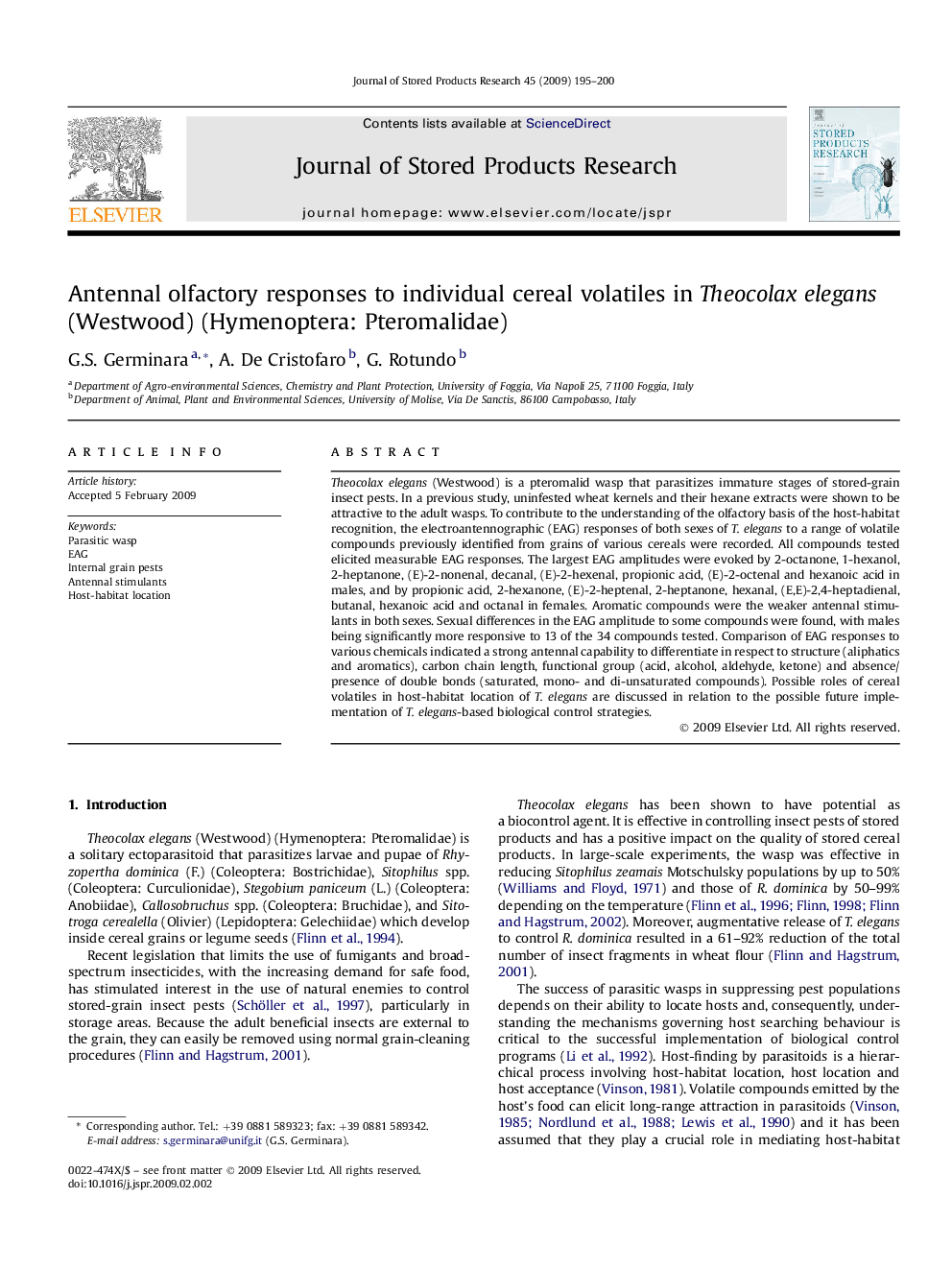| Article ID | Journal | Published Year | Pages | File Type |
|---|---|---|---|---|
| 4517373 | Journal of Stored Products Research | 2009 | 6 Pages |
Abstract
Theocolax elegans (Westwood) is a pteromalid wasp that parasitizes immature stages of stored-grain insect pests. In a previous study, uninfested wheat kernels and their hexane extracts were shown to be attractive to the adult wasps. To contribute to the understanding of the olfactory basis of the host-habitat recognition, the electroantennographic (EAG) responses of both sexes of T. elegans to a range of volatile compounds previously identified from grains of various cereals were recorded. All compounds tested elicited measurable EAG responses. The largest EAG amplitudes were evoked by 2-octanone, 1-hexanol, 2-heptanone, (E)-2-nonenal, decanal, (E)-2-hexenal, propionic acid, (E)-2-octenal and hexanoic acid in males, and by propionic acid, 2-hexanone, (E)-2-heptenal, 2-heptanone, hexanal, (E,E)-2,4-heptadienal, butanal, hexanoic acid and octanal in females. Aromatic compounds were the weaker antennal stimulants in both sexes. Sexual differences in the EAG amplitude to some compounds were found, with males being significantly more responsive to 13 of the 34 compounds tested. Comparison of EAG responses to various chemicals indicated a strong antennal capability to differentiate in respect to structure (aliphatics and aromatics), carbon chain length, functional group (acid, alcohol, aldehyde, ketone) and absence/presence of double bonds (saturated, mono- and di-unsaturated compounds). Possible roles of cereal volatiles in host-habitat location of T. elegans are discussed in relation to the possible future implementation of T. elegans-based biological control strategies.
Keywords
Related Topics
Life Sciences
Agricultural and Biological Sciences
Agronomy and Crop Science
Authors
G.S. Germinara, A. De Cristofaro, G. Rotundo,
